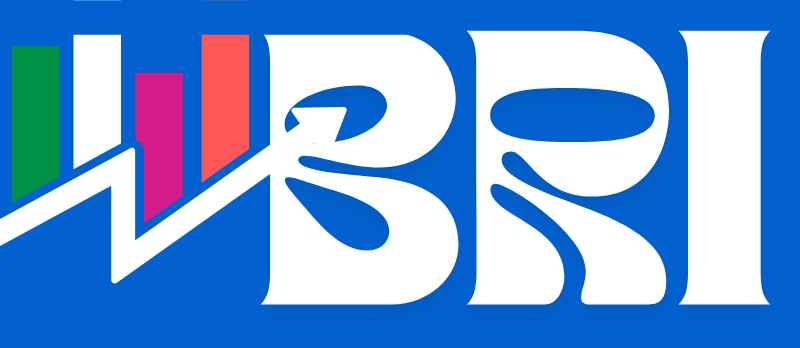
Ferrous Scrap Market Size
As per the Ferrous Scrap Market size analysis conducted by the CMI Team, the global Ferrous Scrap Market is expected to record a CAGR of 7.1% from 2025 to 2034. In 2025, the market size is projected to reach a valuation of USD 75.47 Billion. By 2034, the valuation is anticipated to reach USD 143.75 Billion.
Ferrous Scrap Market Overview
As per the industry experts at CMI, electric arc furnaces have increased demand for sustainable steel production, progressive recycling technology, and an increase in global demand—construction-based, automotive, and manufacturing – have fuelled growth in the ferrous scrap market. Government regulation and environmental policies are in place to support this.
Ferrous Scrap Market Growth Factors and Dynamics
- Sustainability and Green Steel Production: With increasing emphasis on sustainability, the ferrous scrap market is likely to see an upward trend. Steel industries prefer recycled materials like iron scrap as a means of working toward reducing their carbon footprint. Electric arc furnaces (EAFs) that use ferrous scrap as a primary input are more energy-efficient and environmentally friendly in comparison to traditional blast furnaces. A pull toward green steel encourages greater dependence on recycled scrap, thus offering support to market growth. More so, the increasing number of sustainability regulations and carbon reduction goals set by nations and industries are fueling further demand for scrap-based steel, thus ensuring an uninterrupted expansion of the market.
- Technological Advancements in Recycling: Technology is continuously improving the mechanisms of scrap recycling to increase the efficiency and quality of recycled ferrous scrap. Improvements with automated sorting systems, enhanced shredding, and separation technologies increase the efficiency of recyclers recovering more value from scrap, thus allowing improved yield of usable scrap. Improvements in technology also instill more quality scrap for steel production, fulfilling the tough standards of modern steel manufacturing. With the growing prevalence of these technologies, the global supply of ferrous scrap is also bound to increase, thus fostering the growth of the market.
- Increasing Steel Demand in Emerging Economies: Emerging economies are characterized by rapid industrialization and urbanization; on these premises, the Asia-Pacific region contributes toward the ferrous scrap market. Countries like India, China, and Brazil are at the forefront of growth in infrastructure, automotive manufacturing, and industrial production. With regards to steel demand in these regions, the demand for the production of steel through ferrous scrap is much more paramount. The adoption of electric arc furnace technology further adds to the scrap demand, thereby creating a conducive market environment. The ferrous scrap market will continue to be boosted by expanding capacities of steel production in the emerging economies as they seek to improve their recycling rates and reduce dependence on virgin materials.
- Price Volatility and Supply Chain Disruptions: Scrap price volatility ranks as one of the prime dynamics influencing the ferrous scrap market. The prices are affected by a host of factors such as global demand for steel, energy prices, and supply chain disturbances. Suppliers and consumers are faced with uncertainties created by economic deceleration, trade embargoes, and the levelling off of steel production, which could trigger sudden changes in scrap prices. The domestic supply chain for ferrous scraps can be disrupted by many factors: natural disasters, strikes at ports or loading locations, or interventions from governments. Price fluctuations affect the profit margins of scrap recyclers and steel producers and impair companies’ ability to forecast accurately and plan operations appropriately.
- Regulatory and Trade Policies: Trade policies and governmental regulations substantially affect the ferrous scrap market. Tariff structures, restrictions on import/export, and subsidies to domestic industries disrupt the normal global flow of scrap. Thus, for instance, if one goes by countries like the U.S. or India, tariffs and safeguard duties are imposed to protect their domestic steel industry, thereby altering scrap trade patterns and giving rise to supply and demand imbalances. On the other hand, growing environmentally based regulations such as carbon emissions targets and recycling mandates lean towards supporting increased demand for scrap and scrap-based steel production. This would also complicate issues in terms of compliance and international trade that would affect market dynamics.
Report Scope
| Feature of the Report | Details |
| Market Size in 2025 | USD 75.47 Billion |
| Projected Market Size in 2034 | USD 143.75 Billion |
| Market Size in 2024 | USD 70.40 Billion |
| CAGR Growth Rate | 7.1% CAGR |
| Base Year | 2024 |
| Forecast Period | 2025-2034 |
| Key Segment | By Application, Type, End-User and Region |
| Report Coverage | Revenue Estimation and Forecast, Company Profile, Competitive Landscape, Growth Factors and Recent Trends |
| Regional Scope | North America, Europe, Asia Pacific, Middle East & Africa, and South & Central America |
| Buying Options | Request tailored purchasing options to fulfil your requirements for research. |
Ferrous Scrap Market SWOT Analysis
- Strengths: The ferrous scrap market offers opportunities because of a strong and positive base around sustainability and environmental concerns. The global industry shift toward green steel production, focusing on EAF, drastically increases the demand for recycled ferrous scrap. Innovative advancements in recycling technologies like automated sorting and shredding processes place many scrap materials into the high-quality category, ensuring supply. The increasing demand for steel in both the developed and developing economies propels the growth of the market, exemplifying the importance of ferrous scrap in steelmaking. Government policies supporting the recycling of scrap and reduction of carbon footprints on several accounts add support to this market and position it for future growth.
- Weaknesses: An important weakness in the ferrous scrap market is price unpredictability. Steel demand worldwide and fluctuating international energy prices directly influence scrap prices, leading to significant unpredictability for both suppliers and consumers. Increased dependency on international trading systems may be detrimental to sourcing, providing scrap, or setting the price, mostly through global supply chain disturbances, tariffs, labor strikes, and political instability. Another limitation for small- and medium-sized recyclers is competition from larger players, which further hinders them from expanding to a larger scale.
- Opportunities: The ferrous scrap market is significantly loaded with opportunities in the emerging economies of Asia Pacific, where rapid urbanization and industrialization are the key drivers of steel demand. Infrastructure development works, automotive production, and industrial output in India, China, and Brazil offer the scrap market substantial growth potential. Developments in recycling technology, such as AI-driven sorting systems, will create added impetus for improving efficiencies along with enhanced supply to meet regional sustainable steel requirements. Due to increased environmental concerns, scrap-based production will be further boosted by government incentives and programs on green steel.
- Threats: The ferrous scrap industry, characterized by volatile raw material prices, poses a threat to recyclers and steel producers alike. Any forms of international trade restrictions or tariffs imposed by the main scrap-exporting countries, the U.S. and India, would disrupt the international flow of scrap and price balance. A downturn in demand for steel due to an economic slowdown or an unprecedented demand shift toward alternative materials could lessen the overall requirement for ferrous scrap. Sanitization of this market for smaller companies could be limited by consolidation and competitive pressures within the larger players. This could create barriers to entry and diminish market diversity. Additional costs imposed by environmental regulations may also become a burden and create considerable pressure on the profitability of scrap processors.
List of the prominent players in the Ferrous Scrap Market:
- ArcelorMittal
- Nucor Corporation
- Schnitzer Steel Industries
- Commercial Metals Company (CMC)
- Steel Dynamics Inc.
- Tata Steel Limited
- Posco Recycling
- JFE Steel Corporation
- SSAB
- Liberty Steel Group
- Gerdau S.A.
- Mitsubishi Corporation RTM Japan Ltd.
- Oryx Stainless
- Sims Metal Management
- Hanwa Co. Ltd.
- Liberty Iron & Metal Inc.
- Katalor Enterprises
- Dongkuk Steel Mill Co. Ltd.
- Baosteel Group
- Severstal
- Others
The Ferrous Scrap Market is segmented as follows:
By Application
- Steel Production
- Automobile Manufacturing
- Construction Industry
- Foundries and Casting
By Type
- Heavy Melting Scrap (HMS)
- Shredded Scrap
- Turnings and Bundles
By End-User
- Steel Mills
- Foundries
- Recycling Plants
Regional Coverage:
North America
- U.S.
- Canada
- Mexico
- Rest of North America
Europe
- Germany
- France
- U.K.
- Russia
- Italy
- Spain
- Netherlands
- Rest of Europe
Asia Pacific
- China
- Japan
- India
- New Zealand
- Australia
- South Korea
- Taiwan
- Rest of Asia Pacific
The Middle East & Africa
- Saudi Arabia
- UAE
- Egypt
- Kuwait
- South Africa
- Rest of the Middle East & Africa
Latin America
- Brazil
- Argentina
- Rest of Latin America
[embedsocial_reviews id=”d4ae80cffae3d938f997111953699a733c8e6f99″]
